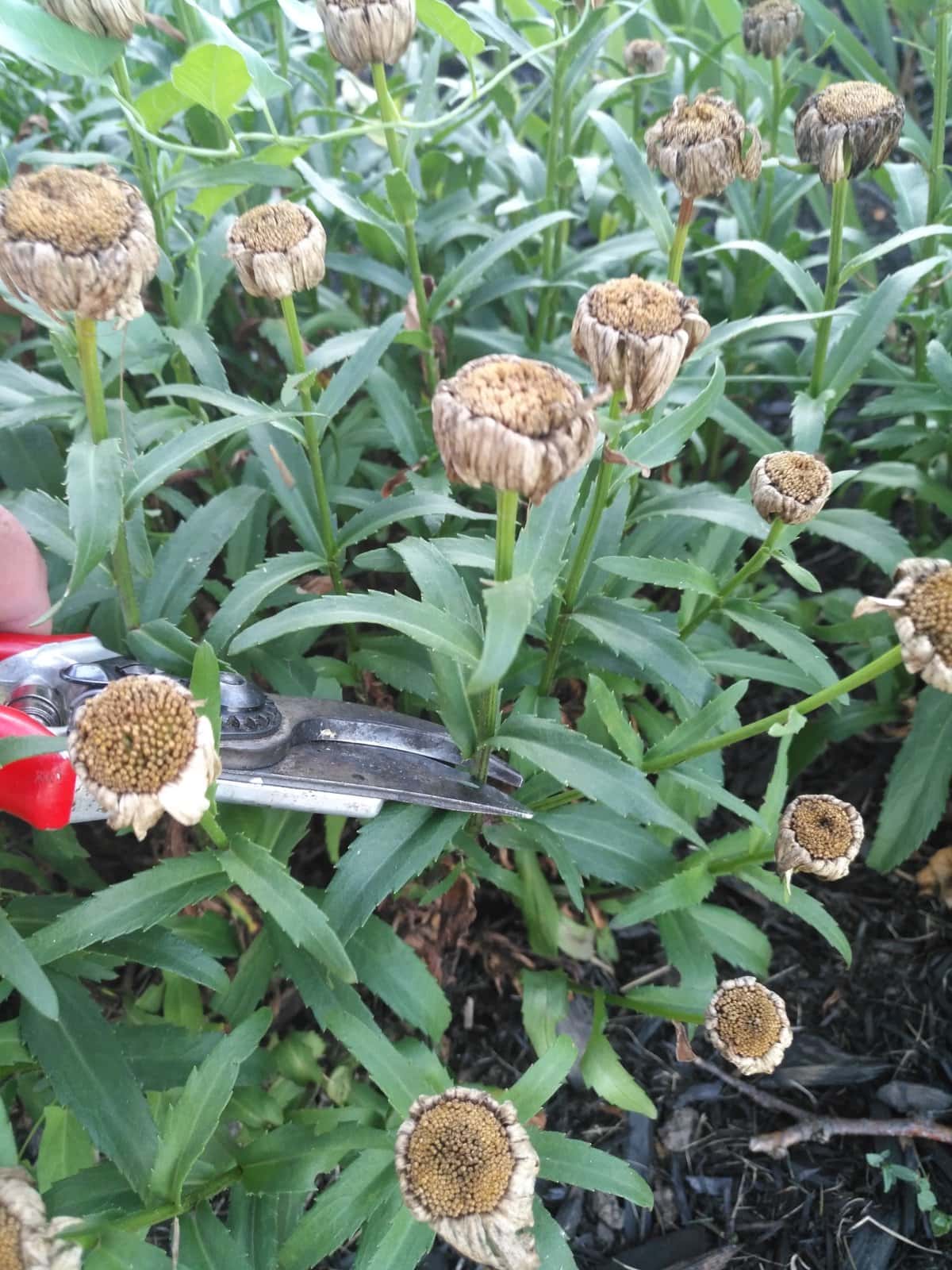All these hot, humid days may be making you feel like a bit of a dead-head. And speaking of deadheads (see what I did there?), one way to keep your garden blooming throughout the summer is by deadheading your flowering shrubs, perennials, and annuals.
If you are a beginner gardener, don’t worry, it is not a difficult task. Deadheading simply means removing the flowers once they have finished blooming.
To better understand the importance of deadheading, it helps to understand how a plant thinks. The goal of most plants is different than the reason we have placed them in our gardens.
Our goal is for the plant to provide beautiful flowers for our enjoyment. For a plant, its goal is to produce a seed to reproduce itself. The flowers are just the means of producing seeds.
So, why is this important to know? Once a plant has finished flowering and the petals have dropped off what remains there is its seed (or fruit containing seed).
If the seed is left there to ripen, it signals to the plant that it has finished its job and does not have to continue flowering. On the other hand, if you rob the plant of that seed, it signals to the plant that it now must bloom again to produce seed.
So, you can trick the plant into blooming multiple times, keeping your plants colourful throughout the season.
There are also other benefits of deadheading. Removing the spent blooms keeps the plant looking tidy and will also encourage the plant to grow thicker and fuller.
If you have a plant that spreads rapidly from reseeding itself and you want to control it, deadheading will help to control its spread.
One caution though, deadheading can become addictive. I know that I find myself deadheading other people’s plants for them. I just can’t stop myself!
As far as the question of timing is concerned for deadheading, you can remove the finished flowers at any time. Of course, the sooner you remove the spent flowers, the quicker it will rebloom.
The more important question is how to deadhead. The biggest mistake I see is that people will just pull off the dead flower petals, but this does not remove the seed head.
Others will cut the flower off right below the flower. This removes the seed head, but you will be left with a dry and unattractive flower stem.
For a basic rule of thumb, deadhead your spent flowers and stems back to a quarter-inch above a new lateral flower, lateral leaf or leaf bud. This encourages new growth from that point and that new growth will produce new flowers.
Most annuals will require regular deadheading to keep blooming for you all summer. A lot of the deadheading can be done by simply using your fingers to pinch off the spent flowers and stems.
When it comes to perennials and shrubs, you will probably need to use secateurs to remove the old flower and stem.
Not all plants will repeat bloom, especially ones that don’t flower until late summer. Some examples of annuals that benefit from deadheading: geraniums, marigolds, zinnias, snapdragons, petunias and angelonia.
Examples of perennials that will benefit from removing the spent blooms are hollyhocks, delphiniums, Shasta daisies, coneflowers, salvias, campanulas, bee balms and gaillardia.
Some flowering shrubs that will bloom more than once if deadheaded are everblooming hydrangeas (such as the endless summer hydrangea varieties), weigela, some varieties of spirea, potentilla, roses, Bloomerang lilac and butterfly bush.
So, if you want a garden that will perform for you all summer, let the deadheading begin!
Joanne Young is a Niagara-on-the-Lake garden expert and coach. See her website at joanneyoung.ca











